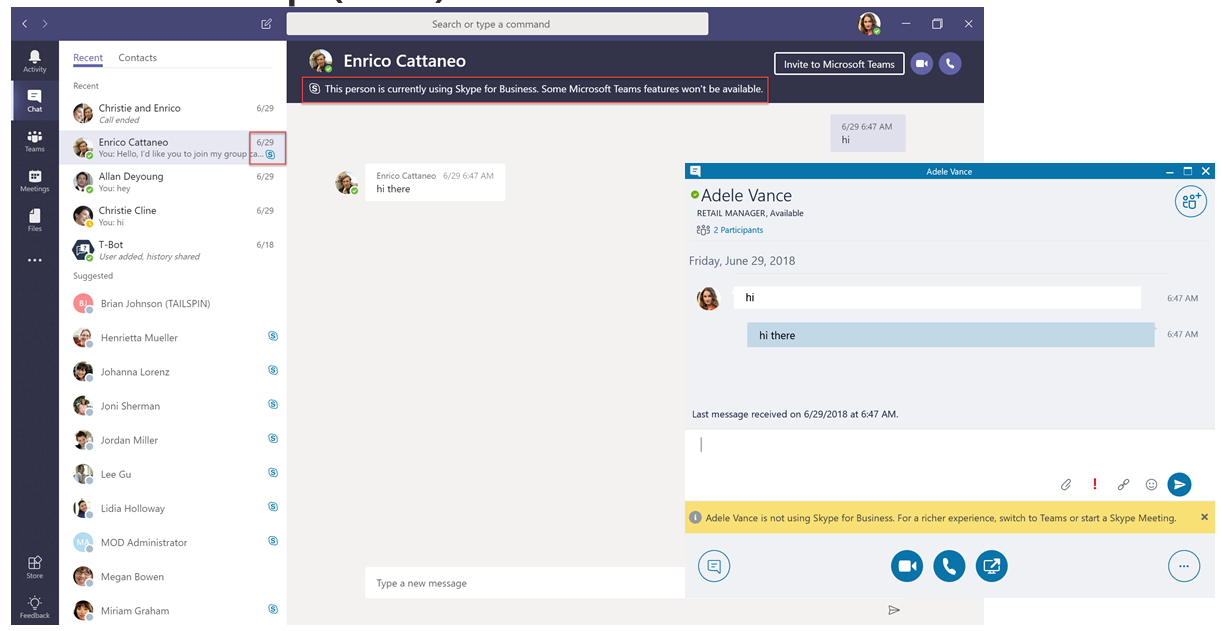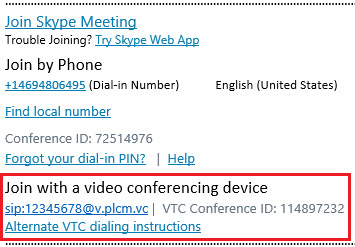

Teams meetings are similar to Skype in terms of setup, inviting participants and sharing video and content. Teams lets you set appointments, conferences and events, share files and content, engage in audio and video calls, create groups and more.
#JOIN SKYPE MEETING WITH TEAMS PLUS#
Teams includes chat, video and audio calling, plus other communication features like app integration, file storage and collaboration tools. Microsoft Teams has been coined as a collaboration experience that brings together conversations, chat and content. Teams is a product built from the ground up to do this in a workplace, but also integrate with Microsoft Office 365 – a huge boost for users of the platform. At its core, Skype is a communications platform created for video and audio calls, and later adapted for business. In comparison, Teams was created and developed by Microsoft rather than obtained and developed, like Skype.īoth platforms are widely used for meetings, messaging and voice/video calling, but there are noticeable differences between the two, particularly on feature set. When Microsoft acquired the product, they took over the development of existing Skype desktops and mobile apps and began to develop its functions and features. Before Microsoft took over, Skype allowed both instant messaging, voice and video calls between registered users.
#JOIN SKYPE MEETING WITH TEAMS WINDOWS#
Microsoft began integrating the platform with their existing products and in 2013, Microsoft phased out Windows Live Messenger and Lync in favour of Skype. In 2011, Microsoft bought Skype for $8.5billion.

Customers can continue using Skype independently, make the move to Teams immediately, or use the two platforms side by side until Skype is discontinued. Skype will still be supported by Microsoft and organisations who communicate via Skype will still be able to use it until its retirement date in 2021. Since September 2019, customers signing up for Office 365 are automatically set up with Microsoft Teams. Microsoft announced that it wanted to create a single platform that unifies collaborative requirements for working professionals and having developed Teams, it can retire its older products which are less advanced. Due to this, it’s in the process of replacing Skype as Microsoft’s core communications system.Īs Teams includes all the functionality of Skype, there’s no real reason for businesses to be choosing Skype as their main communications platform.

As the primary application for meetings and calling in Office 365, Teams has all the functions of Skype for Business, plus extra communication and collaboration features. Teams expands on the capabilities of the previous system by bringing together chat, apps and files in an integrated user interface, allowing those who use it to move faster and collaborate efficiently. If the user clicks on the Join button on a Skype Meeting from the Teams client – it will re-direct them to the web interface of Skype for Business and from there launch the client.Ī more in-depth look at the integrations is available on Richard Brynteson’s blog.The capabilities and set of experiences offered by Teams are far more advanced than Skype for Business.

Skype for Business meetings show up in Teams: Where the conversation continues depends on which toast notification you click. Users receive a toast notifications from both Skype for Business & Microsoft Teams: There is a nice icon in Teams to show the user that the other person is using Skype for Business: Users in Microsoft Teams are presented with a feature limitation warning on talking to someone on Skype for Business: The presence display carries between both systems: However, it is important to note with the below screenshots that I am using Skype for Business Online, but the other users are on-premises. This is documented so should not come as a surprise, and hopefully will be addressed when the product is fully released sometime early this year, if not in the near future. In short Microsoft Teams does not talk to Skype for Business Server, only the Online version as part of Office 365. There is a number of integration differences when looking at Microsoft Teams as well as Skype for Business Server vs. The voice/video/meeting component of Microsoft Teams is built on the next generation of Skype for Business infrastructure (which is touted to bring about the unification of the Skype consumer and Skype for Business platforms).


 0 kommentar(er)
0 kommentar(er)
